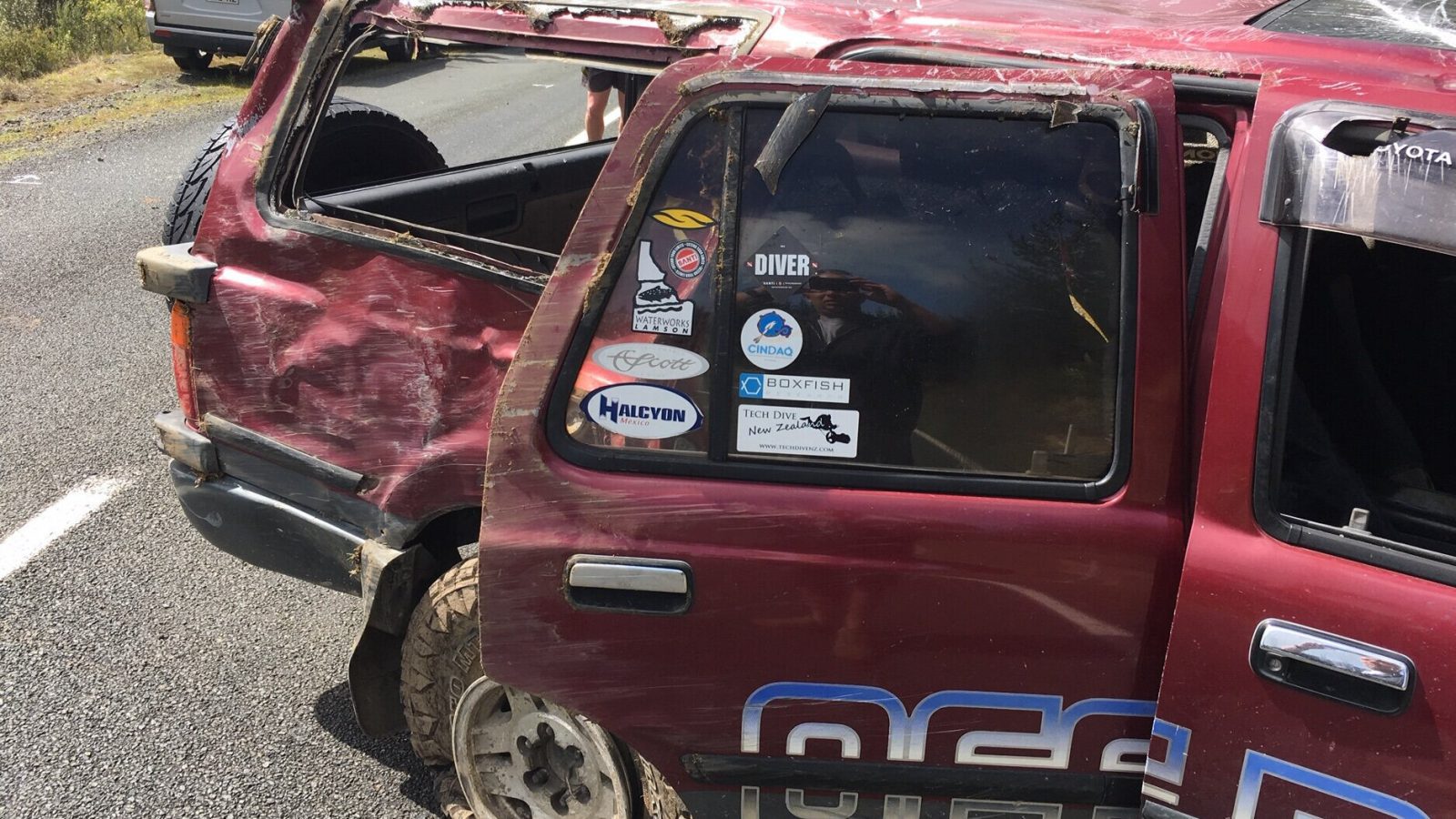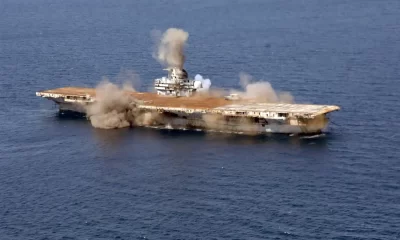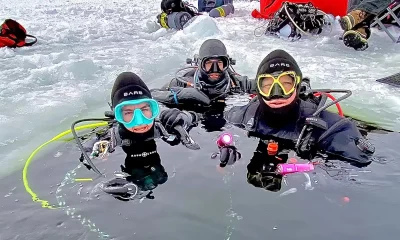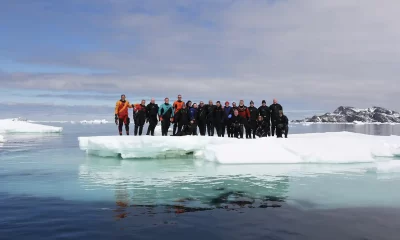Community
What’s Driving Your Diving?
Have you ever given a thought to what would happen if you got in an accident with your vehicle packed full with dive gear. Instructor Russell Hughes found out the hard way and it’s not pretty. Here’s what you need to know. Listen up people.


Photo courtesy of Russel Hughes.
by Russell Hughes
Header photo by Russell Hughes
In October I blew a tire in my trusty Hilux Surf while it was fully loaded. I’ve had the vehicle for five years, and those who know me know I loved that archaic 90’s SUV! The accident really shook me, and I thought to share this incident with everyone and hopefully stop any unnecessary harm coming to others while transporting dive gear.
The Accident

Photo courtesy of Russell Hughes.
I was transporting multiple twin sets, stages, deco bottles, and weights, and headed for a gas fill. The speed limit was 100 KPH, and the speedometer read 80. I felt the back come loose on an uphill corner with a downhill camber. From habit, I relaxed the pedals and hoped that the truck would regain traction after the initial loss. It didn’t.
The vehicle fishtailed wildly until it caught an edge, flipped, and started to roll as I lost consciousness! I remember waking up in the middle of nowhere with the truck still in drive, a head full of smashed glass, and the doors jammed. I was lucky to be alive.
After kicking my way out of the vehicle, I made sure the scene was clear and that no other motorists would be harmed by the wreck. I looked through the blown out windows of my truck but didn’t see any gear.
Where had it gone? It had been ejected through the windows! Tanks and manifolds were now bent and hissing along the bank. Not great, eh?

Transporting Your Kit Safely

Photo courtesy
I’ve seen how we all transport dive kits in SUVs, sedans, and other vehicles—typically not a utility vehicle or truck where the payload is separated from the cab. The reality is that we all transport single or multiple compressed gas cylinders in the back of our vehicles, and you’d probably be lying if you said that you always stow them properly.
Take 10 minutes! Pack properly, and if you do not have the luxury of partitioning the vehicle, then tie stuff down. After consulting fire services, ambulance drivers, and the police, I’ve learned that loose dive gear kills people.

Photo courtesy of Russell Hughes.
Whenever possible, travel to locations and rent tanks. Many of our favourite facilities are able to provide rental cylinders for diving guests. Within the GUE community here in Tutukaka we operate as a club, so anyone diving can access tanks and fills by pre-booking.
Plan your trip and have a dedicated support vehicle. It takes longer, but hell, at least there won’t be panic packing and the start of the error chain.
Lucky Man!
I am a lucky man! Lucky to have rolled sideways. Lucky to have sustained minor injuries. If I had gone end over end, more than several hundred kilograms of gear would’ve likely come crashing down on my head with little resistance. Lucky I was alone, so no one else was hurt. The damaged gear could be fixed or replaced. I learned from my mistake. I’m hoping you can learn from my mistake, too. Please store your gear safely before you travel. Safe diving, and safe driving to get there.
A version of this article originally was posted on Russ’s blog.

Russell Hughes is a GUE instructor based in New Zealand. Russ is an avid explorer who has participated as a project diver in a number of exploration initiatives around the world, including Ox Bel Ha Science Project Mexico and Project Baseline – Fiji with M/Y Advantage. He is also a 360 cameraman and worked with CINDAQ to document caves in Mexico.






















































